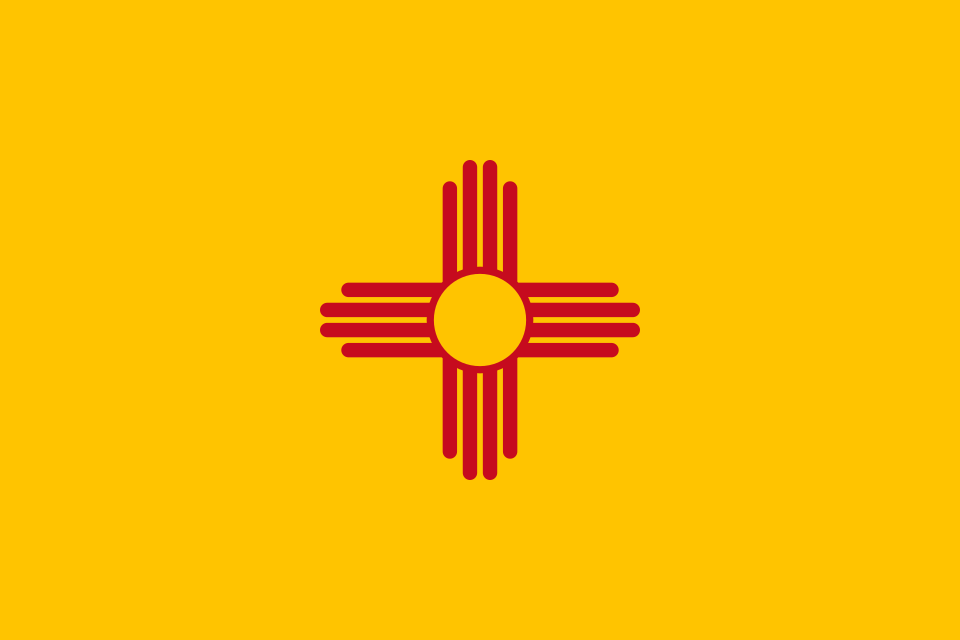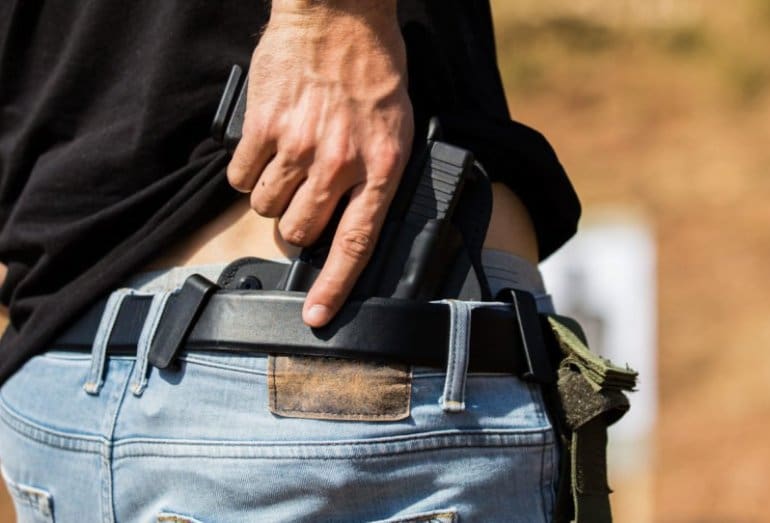Ultimately, it’s up to parents to do everything they can to ensure their kids’ safety and security. We expect school officials to keep our children safe while they’re at school. Unfortunately, some school officials don’t. Some are too lazy to ensure exterior doors are secure. Others suffer from a mental denial response that anything bad would ever happen at their school. Denial, of course, has no survival value.
Even if they mean well, not all school administrators have the expertise in safety and security to successfully implement best practices to keep kids safe from lunatics and criminals who might want to do the unthinkable. That’s where we as parents must step up and hold school officials accountable for the safety and security of our kids. A failure to do so can result in unimaginable horror.

Take Uvalde, Texas, for instance. The officials there had a “no guns” policy prohibiting staff from having guns even though Texas law allows it. They also had a school police force, but those officers prioritized their own safety over the lives of children they were paid to protect.
Local law enforcement failed to follow widely accepted protocols for dealing with an active shooter. As a result, children who didn’t have to die bled out while police waited 75 minutes to take out the killer.

The Washington Times reported on the cascading failures. We covered it here as well . . .
Police officials who responded to the deadly Uvalde, Texas, elementary school shooting waited far too long to confront the gunman, acted with “no urgency” in establishing a command post and communicated inaccurate information to grieving families, according to a Justice Department report released Thursday that identifies “cascading failures” in law enforcement’s handling of the massacre.
The Justice Department report, the most comprehensive federal accounting of the maligned police response to the May 24, 2022, shooting at Robb Elementary School, catalogs a sweeping array of training, communication, leadership and technology problems that federal officials say contributed to the crisis lasting far longer than necessary. All the while, the report says, terrified students inside the classrooms called 911 and agonized parents begged officers to go in.
“Had law enforcement agencies followed generally accepted practices in active shooter situations and gone right after the shooter and stopped him, lives would have been saved and people would have survived,” Attorney General Merrick Garland said Thursday at a news conference in Uvalde after Justice Department officials briefed family members on their findings. The Uvalde victims, he said, “deserved better.”
They deserved better, absolutely. Why didn’t they demand better before it happened? Was it a case of assuming someone else handled security concerns?
Why haven’t they demanded better since then? Why does the Uvalde district still have a “no guns for staff” policy (see page 63)? Incredibly they still have this policy even after the utter failure of their “no guns” policy that fateful day! Why it’s almost like they haven’t learned.
Making sure your kid’s school isn’t the next Uvalde
What can you do to make sure your kids’ or grandkids’ school takes security seriously and aggressively mitigates risks? First and foremost, don’t assume.
Instead, act. Be proactive. Don’t wait for someone else to do it!
Visit the school yourself. Take a day off from your 9 to 5 job if you have to. Stop by at different times during the school day and do your own evaluation of safety and security protocols. If you as a layperson see obvious security failures like unlocked exterior doors during school hours, bring that information to school administrators. This would include service entrances.
If the school principal doesn’t want to address your concerns appropriately and promptly, make an appointment to speak with the superintendent. These folks tend to be risk adverse, so framing the security problems as closing off those potential dangers might prod them to take action if an appeal to common sense does not.
If the principal and superintendent are both dedicated practitioners of the denial response “it won’t happen here,” take it to the school board. School shootings and mass casualty incidents are on everyone’s mind. No school board will want to face angry parents and voters after ignoring notice of deficiencies and pleas to implement security best practices ahead of an Uvalde-type incident.
Even if doors remain locked, there may be other issues that you didn’t notice. Again, educator training primarily revolves around educating, not security. They may not know any better. That’s where security-conscious parents can help make them aware of best practices and to implement them.
Sure, you will face institutional inertia against better security. We can agree that few will relish locked doors if open doors are still a thing at your kid’s school. Unlocking the door every time is a pain, but locked doors have been proven time and time again to save lives by delaying or denying bad guys’ (or gals’) entrance into schools.
Dig Deeper.
Does your kid’s school even have formal security protocols or are they operating by the seat of the pants? Find out. How? Open a dialogue with them about it.
Admittedly, it’s not a dialogue they get a lot. It’ll probably make them uncomfortable knowing someone is asking about it, especially if they don’t have one. However, your school’s safety trumps their discomfort.
When I did exactly this last school year, I invited the principal to bring in a school resource officer. I laid out my credentials in an email and explained what I would like to know and gave them some specific questions.
The principal, to put it charitably, was uncomfortable with both me and my query. Like a wise man, he punted to the district’s Director of Safety and Security. From there, I met Rich Hirsch, that Director of Safety and Security. He and I quickly became good friends, and we see the world very similarly.
I’ll admit I lucked out and then some. Not only did our district have such a position, but the guy holding it is a go-getter who lives and breathes this stuff. He loved that a parent was asking these questions and holding them accountable.
When he worked as a school resource officer years ago, he received a radio call for shots fired at his kid’s high school. Unknown injuries. That radio call proved transformative for him. He told me he went from a conscientious SRO to voracious in his thirst to learn more and train school staff and even the bus drivers in safety and security strategies. “If you see something, say something,” was one of his key imperatives for staffers.
Not everyone will have such a person within their schools, or such an exemplary person filling it. That doesn’t mean you can’t help educate and motivate those in charge of these issues in your schools to learn more and do better.
The NRA’s School Shield program provides a great apolitical springboard for those discussions. Share their suggested questions in your initial email to administrators as I did so they get an idea of what you’re looking for.
Obviously some school administrators will be uncomfortable with this unusual attempt to evaluate their security program. That’s okay. They don’t have to be comfortable. Ensuring the safety of the kids in the school is more important than their comfort.
Just communicate with them that the harder we make the potential target, the fewer people will die should some lunatic try to massacre helpless little boys and girls in your hometown.
Here are some questions the School Shield program has put together for parents to ask teachers and administrators to make sure they don’t have their heads in the sand when it comes to students’ safety . . .
1. Has our school ever had a vulnerability assessment done?
2. Does our school work with local law enforcement and emergency responders in crisis planning and training?
3. When was our emergency operations/crisis management plan last reviewed?
4. What types of drills are conducted at our school and at what frequency?
5. Are all exterior doors of our school locked during instructional hours?
6. Are all visitors to our school required to check in with the main office?
7. Are students and staff trained on how to identify and report suspicious or concerning behaviors/comments?
8. Does our school have a behavioral threat assessment team?
9. If there is an emergency, how and when are parents/guardians notified?
10. Do we have designated security personnel assigned to our school? If so, are they armed/unarmed?
Here’s a guide you can download and print out with all of these questions. You can email this to your school admins.
The School Shield website also has a series of videos talking about the security analysis their experts provide from the perspective of teachers, parents, paramedics, etc., as well as ways to implement increased security without frightening parents. Watch those. You can learn from them as well.
Don’t assume your kid’s school is as safe as it could (or should) be.
You may have to take the role as the catalyst for change to mitigate risks and maximize safety. However, the benefits of taking action proactively is priceless.
The life you save might be your son or daughter’s.








